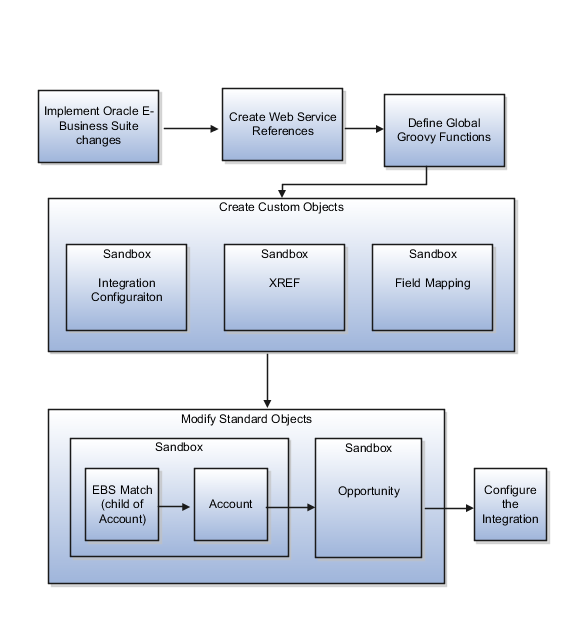Configuration Roadmap
To use this integration, you must configure application artifacts in both Oracle E-Business Suite and Oracle CX Sales.
In the Oracle E-Business Suite instance several patches must be applied, and web services must be configured and exposed. In the Oracle CX Sales instance, custom Groovy logic must be added, custom objects created, and standard objects enhanced. These steps must be executed in order, because many of them rely on the successful completion of previous steps. The following figure shows a high-level overview of the configuration sequence.

Many of the Oracle CX Sales configuration steps in Chapter 3 have several component procedures, such as creating sandboxes, creating or augmenting objects, defining fields, defining business logic with functions, defining rules or triggers, and defining user interface changes. These component procedures are used in many different configuration steps, but not all procedures are used in all steps. For example, the procedure to create an object or the process to define a trigger is the same from one step to the next, but the names and details of the objects or triggers will change from step to step.
The general process for each component procedure is listed before the specific objects that are to be created or configured. The topics for the specific objects provide details on each of the configuration steps, and which component procedures and details are required in each step.